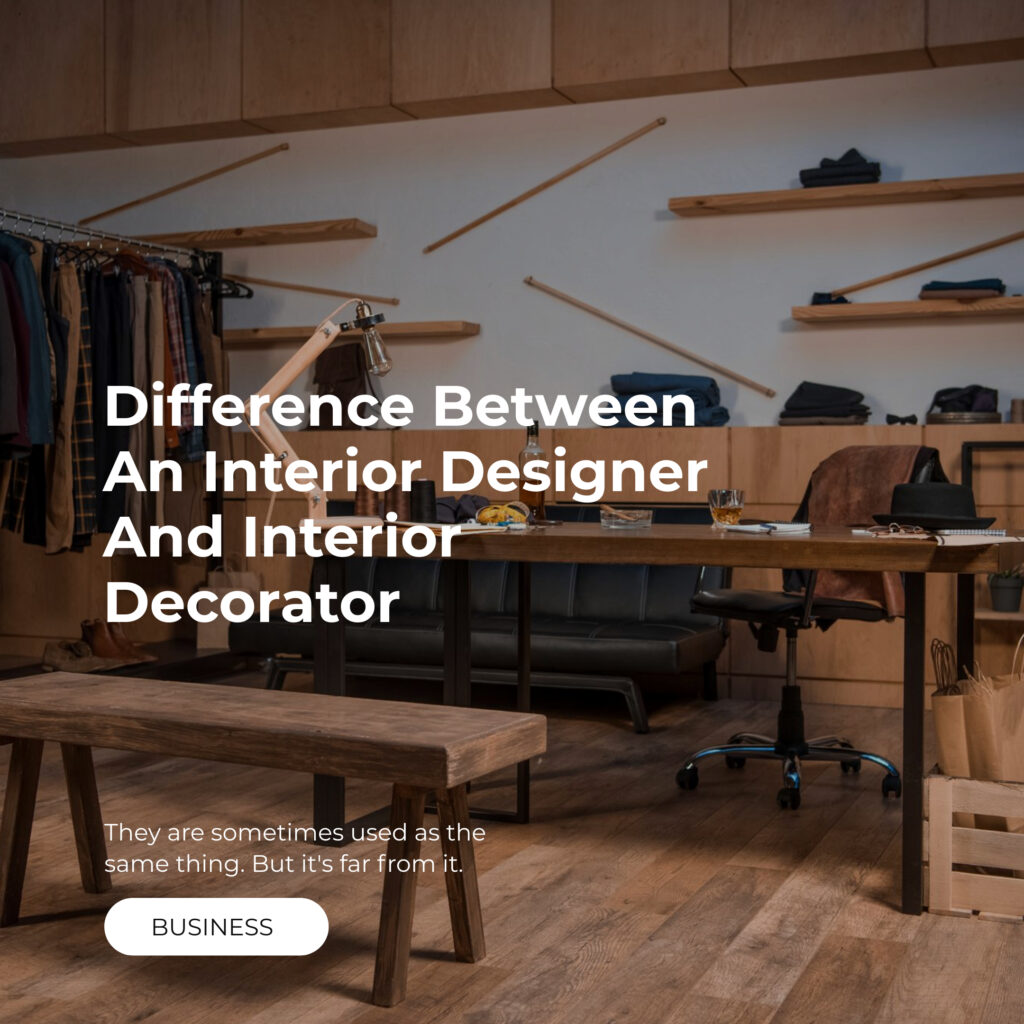Difference Between An Interior Designer And Interior Decorator

In the realm of creating captivating living spaces, the terms “Interior Designer” and “Interior Decorator” are often used interchangeably, leading to a common misconception. However, a nuanced understanding of their roles is crucial for anyone seeking to transform their living space into a harmonious haven. In this comprehensive guide, we delve into the fundamental disparities between an Interior Designer and an Interior Decorator, shedding light on the distinctive skills and expertise each profession brings to the table.
Interior Designer: Crafting Functional Aesthetics
Defining the Role
An Interior Designer is akin to an architect of interiors, orchestrating a seamless blend of functionality and aesthetics. Their expertise extends beyond surface-level aesthetics, encompassing an in-depth comprehension of spatial design, structural considerations, and building codes. Interior Designers undergo rigorous education and training, often possessing degrees in design or architecture.
Skill Set
Interior Designers boast a diverse skill set, including spatial planning, 3D modeling, and proficiency in industry-standard design software. Their keen eye for detail allows them to optimize spaces for both aesthetic appeal and practical utility. Moreover, they collaborate closely with architects and contractors, ensuring a holistic approach to creating cohesive and functional interiors.
Project Scope
Interior Designers are typically involved in projects from the conceptualization stage. They work with clients to understand their needs, develop design concepts, and oversee the entire project, ensuring it aligns with the client’s vision while adhering to structural and safety standards.
Everyone has their perception on what a designer is and what a decorator is. Many people use the terms “interior design” and “interior decorating” interchangeably, but these professions differ in critical ways. If we go back in time to the history of interior decoration and design, you’ll find that it did all start with interior decoration.
You can say that they are siblings for lack of better words. So let’s get into the nitty-gritty of it.
Interior design is the art and science of understanding people’s behavior to create functional spaces within a building. Let’s look at psychology for a moment. Every human on this earth responds to different things in different ways. Have you ever wondered what you feel physically and mentally when you sit on your sofa? Or, when you are intimate in your bedroom? The color, lighting, furniture, even the smell of the room all play a role psychologically on how you feel. This is an important factor when considering the differences between decoration and design.
Interior decoration is the furnishing or adorning of a space with fashionable or beautiful things. In short, interior designers may decorate, but decorators do not design. Decorating a space is merely just making it pretty, while not understanding (or in some cases, caring) about the functionality of the space or how it impacts the person who inhabits the environment that is being decorated.
Interior designers apply creative and technical solutions within a structure that are functional, attractive and beneficial to the occupants’ quality of life and culture. Designs respond to and coordinate with the building shell and acknowledge the physical location and social context of the project. Designs must adhere to code and regulatory requirements and encourage the principles of environmental sustainability.
The interior design process follows a systematic and coordinated methodology — including research, analysis and integration of knowledge into the creative process — to satisfy the client’s needs and resources, not just their wants.
In essence, the key distinction lies in the scope of their responsibilities. Interior Designers bring an in-depth understanding of architecture and spatial design, ensuring a seamless fusion of form and function. Interior Decorators, on the other hand, specialize in refining aesthetics, adding the finishing touches that elevate a space’s visual appeal.
By recognizing the unique strengths each professional brings, you can make an informed decision when embarking on your next interior design project. Whether you prioritize functionality or aspire for a visually stunning space, understanding the roles of Interior Designers and Interior Decorators is pivotal in achieving your desired outcome.



